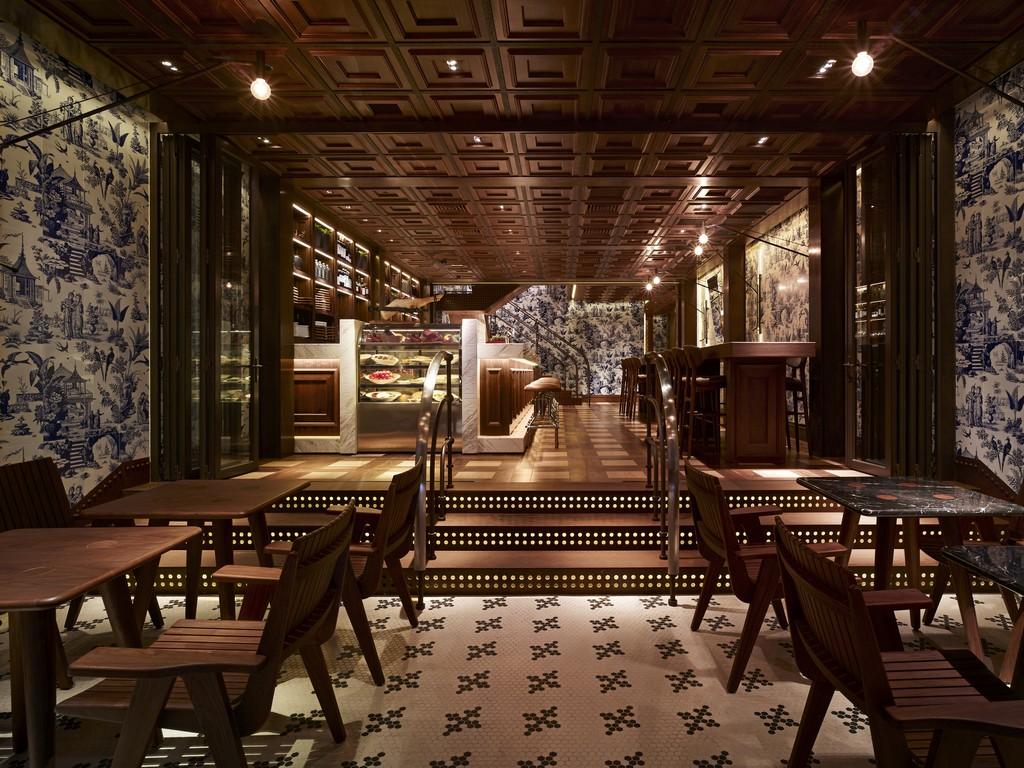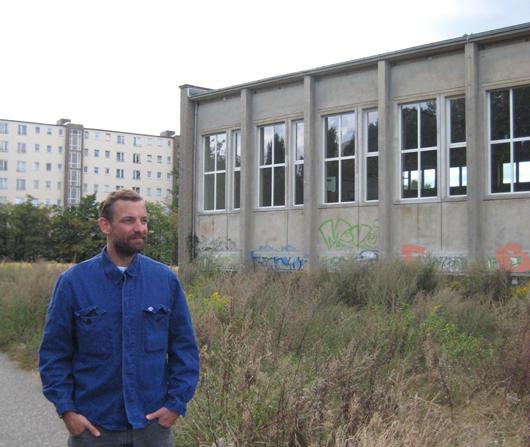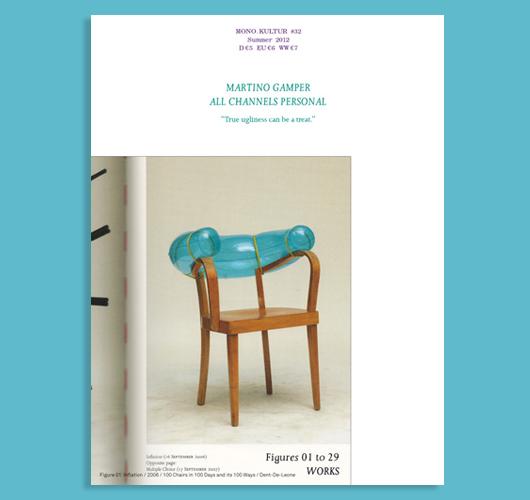
10.22.12
Fair Report
At the Istanbul Design Biennial
Last week marked the beginning of the inaugural Istanbul Design Biennial, curated by Joseph Grima and Emre Arolat and organized by the local cultural foundation IKVS — the same organization behind the city’s contemporary art biennial. We’re homebound until Design Miami but our intrepid London-based correspondent Claire Walsh bravely reported back on her maiden voyage, which included a tour of the official biennial festivities (on view until mid-December) but also the occasional foray into Istanbul’s neighborhoods to capture urban texture, like the Memphis-style painted columns above. “Istanbul’s art biennial is renowned for tackling heavy themes, so there was a lot to measure up to!” she says. “Titled Kusurluluk (or “imperfection” in plain old English), this biennial posed pivotal questions about design’s role in growing metropolises like Istanbul, archaic organization, and what we understand design to be. This wasn’t about tables and chairs. Hell no — this was cerebral. Here are some of my favorite photos and moments from my trip.”

“Installed in the old Galata Greek primary school is the brilliant Adhocracy show curated by Joseph Grima (a busy man who also edits the Italian design bible Domus). It spotlights alternative approaches to the top-down organization that dominates the design industry – it’s about DIY, hackers, rebellion, and participatory production. Or, according to the official language: “The exhibition argues that rather than in finished products, the maximum expression of design today is to be found in processes—systems, tools, networks and platforms that involve users in the process of definition of the end product. The exhibition charts the migration of the epicentre of production from the factory floor to back to the craftsman’s workshop. The title, Adhocracy, is a reference to the move away from the dominance of the bureaucratic model of organization, typical of the industrial era, towards an approach that embraces bottom-up innovation.” Shown here is Carlo Ritti’s Open Source Architecture Manifesto, first published on wiki in 2011. The text was printing out via a suspended plotter, direct from the live wiki page, updating as any changes were made. Do you hear that metaphor ringing loud and clear?”

“This kind of thinking isn’t new of course; design stalwart Enzo Mari has been doing it for years. Proposta per un’Autoprogrettazione was first exhibited in 1974. (Artek picked up the chair design for production a few years ago.) At the time of its debut, Mari sold not the furniture, but rather $2 manuals that people could use to DIY the designs at home. Almost 40 years later the world has caught on. Pretty radical.”

“This coffee grinder has been designed upon a universal grid, conceived and developed by Open Structures. Download a design, adapt it on the grid, source parts locally, make it and share the results. Simple.”

“You say open source? I say rapid manufacturing. There were several 3D printers at the show but only this one was churning out designs in chocolate spread, which were then chilled in a mini-fridge. I drifted past several times but never did get to find out what adhocracy actually tastes like.”

“Unfold, a studio from Belgium, installed a 3D printer on a mobile stall, setting up shop on the ground floor of the Greek School and printing ‘knock-offs’ of design classics. These little guys are printed from scanned digital models of Enzo Mari’s Sedici Animali.”

“You can easily spend a few hours losing yourself in the steep (read: vertical), winding streets of Çukurcuma, Istanbul’s antiques district. Although it’s filled with stores and popular with tourists, it still feels residential, and some families have been living here for generations. This caged blue lamp caught my eye; it seemed kind of like the ’20s, ’50s and ’80s all rolled into one.”

“Local stores spill out onto the streets. These rickety looking stools look preferable to that bollard though.”

“The Biennial worked with Dutch outfit Salon/1 and invited designers to collaborate with local craftsman to create one-off pieces, installing them throughout the historic Galata area. This Apartment Dress is by Marga Weimans, who developed the woven fabric herself, and it can be found hanging in VASA Woodcarving. The workshop has been passed down from father to son, and the woody smell inside was incredible.”

“Depending who you speak to, the population of Istanbul is anywhere between 13 to 20 million, but there’s no denying it’s a megametropolis. However you can be wandering through the inner suburbs and see something like this! It’s like stepping back 100 years.”

“Local designer Tardu Kuman mostly works in solid wood and is paying an obvious homage to Gerrit Rietveld’s design here. However he has rather boldly tried to improve an icon; you can sit down, slide forward and tilt this backrest, making it more comfortable… marginally.”

“The city’s vast contemporary art museum, Istanbul Modern, is located directly on the Bosphorus River. The basement is hosting local architect Emre Arolat’s exhibition “Musibet,” which roughly translates into English as “calamity”. The show hammered home the feeling of Istanbul as a city in flux, exploring all the positive and negative connotations of its economic emergence.”

“Art and design schools from across Turkey were also invited to respond to the Biennial’s main theme of Imperfection. The results were varied and spread through the wide corridors of University Istanbul Technical University.”

“These cut stencils hooked over a standard strip light appeal to the type lover.”

“Students from Bilkent University in Ankara tacked up photography, graphic, and illustration work across and snaking mesh fence.”

“Trailing the tour I came across a ton of work I could not really decipher, and on my own I was left to my own conclusions. But there was something appealing about these creepy handmade masks.”

“After looking at design exhibits all day you have those ‘Is it? Isn’t it?’ moments. I am pretty sure these chairs had nothing to do with the Biennial, but lined up so artfully they got me snapping anyway.”
Claire Walsh is a London-based editor at Stylus. She writes about design and travel and occasionally works as a stylist. She is the author of the Wallpaper* City Guide to Helsinki and Interior of London Style.


